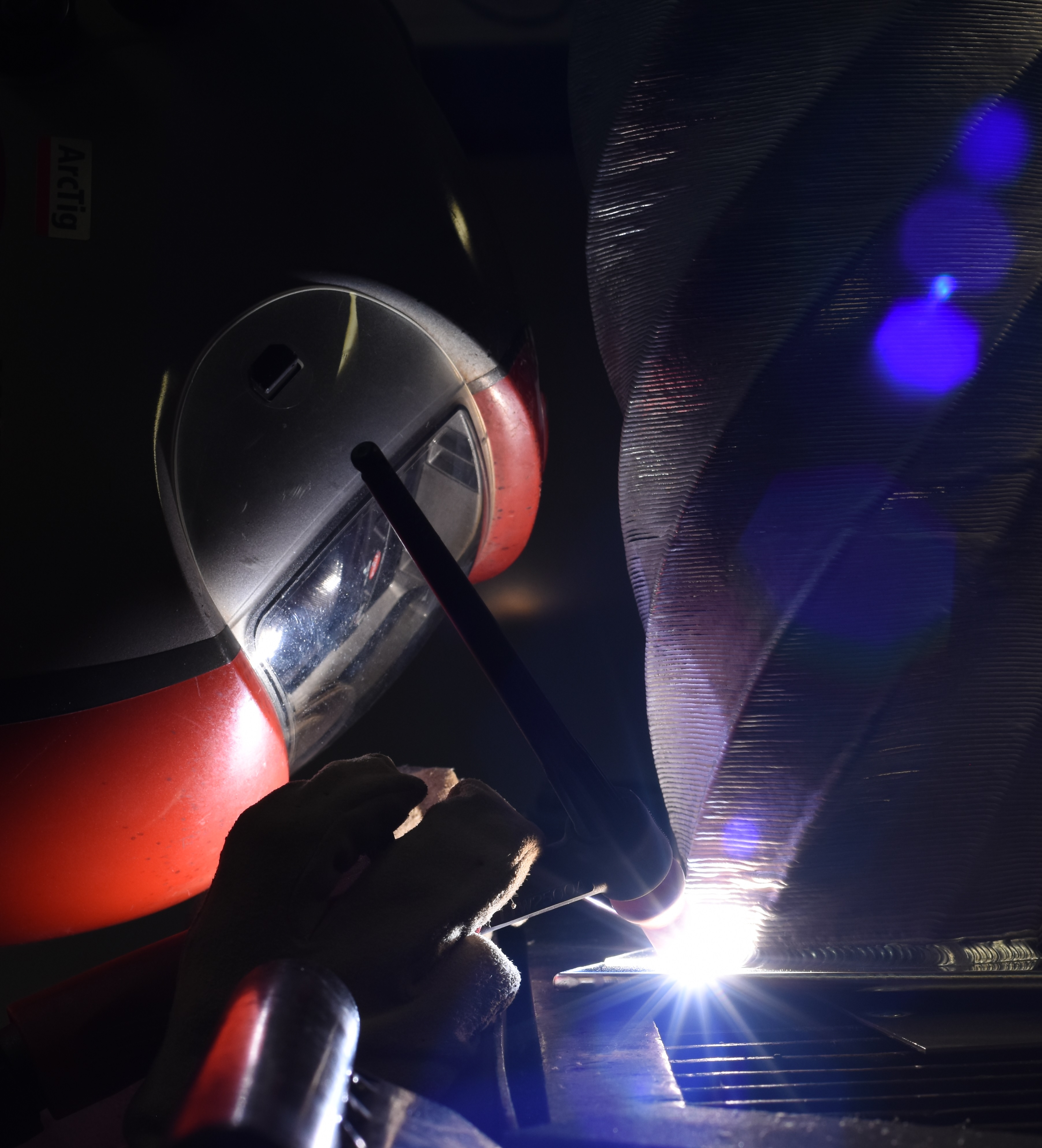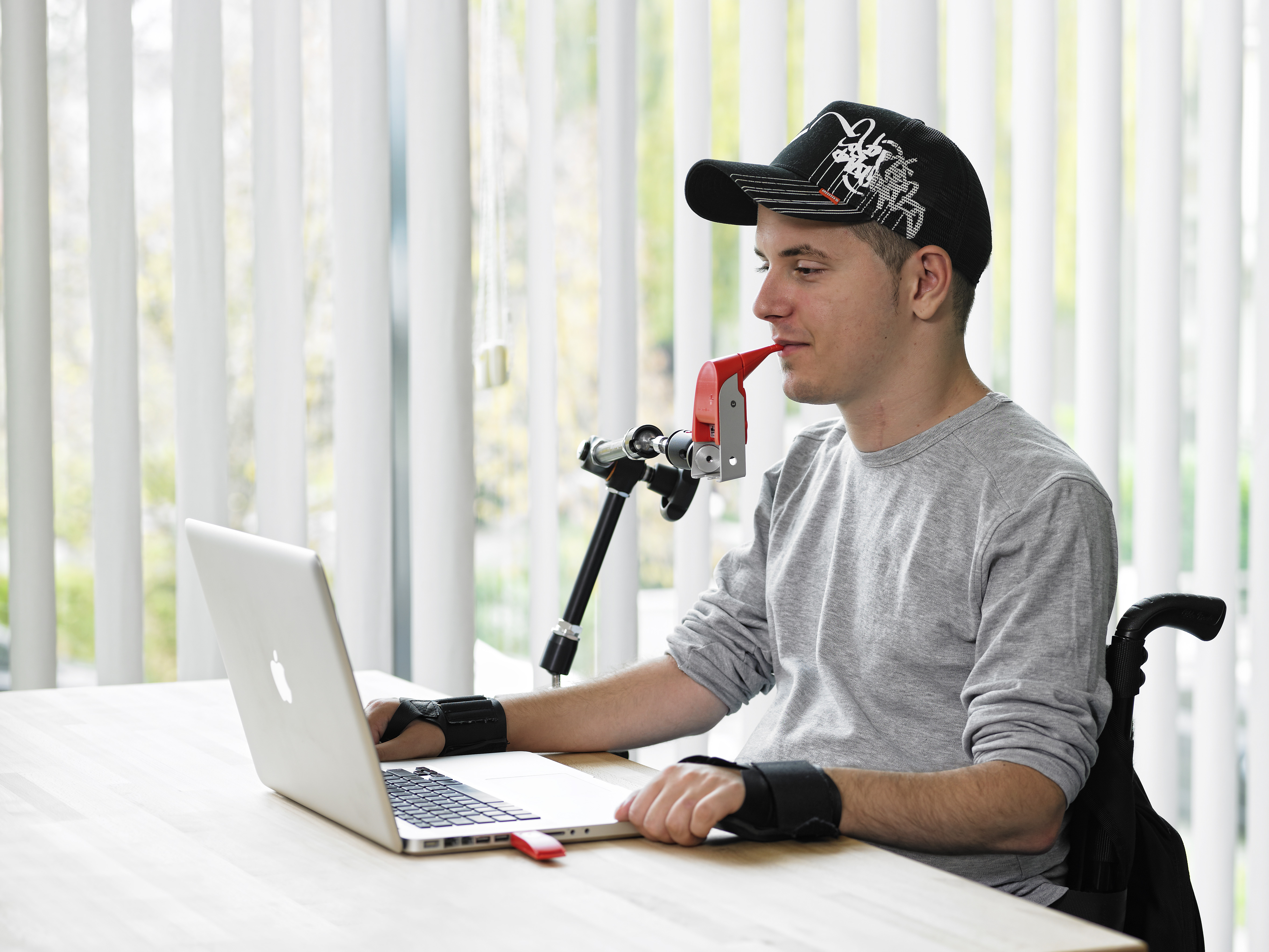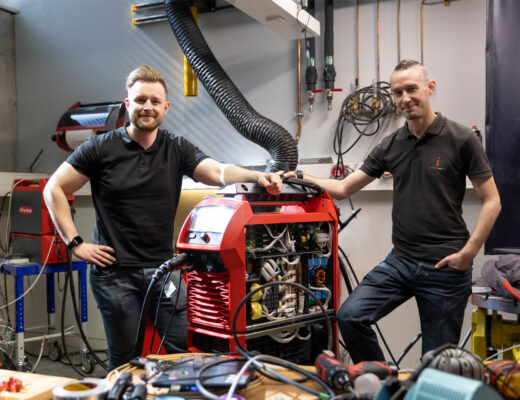We all know that AC/DC isn’t just the name of a hard rock band, but that it also stands for alternating current (AC) and direct current (DC). But what is alternating current really all about? What does it have to do with aluminum? What are half-waves in this context? And what is a “cap”?
AC Welding
Whenever aluminum is welded using the tungsten inert gas welding process, alternating current is used. Why?
Welding aluminum is particularly difficult because the material is surrounded by an oxide layer. This only melts at approximately 2015 degrees Celsius, but aluminum itself, depending on the alloy, melts at around 650 degrees. This means that the aluminum would run away while the oxide layer was being melted, making welding impossible. The oxide layer needs to be destroyed or displaced in order for the process to work.
…
…
It takes some practice to weld such an even TIG seam
When welding using alternating current (AC), the electrode continues to change from plus to minus. When the electrode is set to positive, the negatively polarized electrons move from the workpiece into the electrode, rupturing the oxide layer in the process. The electrode is then set to negative and the electrons moving into the workpiece generate heat—this is how the penetration required for the weld seam occurs.
The MagicWave from Fronius is suitable for alternating current and is therefore ideally suited to aluminum applications.
Waveforms
Welding current sources suitable for AC have an inverter for generating alternating current. Many welding systems offer various settings for specifying how the current alternating between plus and minus should behave. Users can select between different half-wave forms.
For example, the current can flow first in the positive range and then in the negative range at a constant strength—this results in a hard rectangle. Using this setting, the arc is extremely stable, but the extremely loud operating noise is unpleasant for the welder; it may even be necessary for them to work wearing hearing protectors. Smooth, sinusoidal waves are also possible. The arc is then unstable, but the welding noise is pleasantly quiet. In most aluminum applications, a combination of the two is the best choice; a rectangle with rounded corners for the negative half-wave and a sine wave for the positive half-wave.
The MagicWave welding system from Fronius also offers a triangle form for a stable arc with high pressure and a wide range of combinations of all waveforms. The welder can therefore select exactly the right setting for the application.
Cap
When purchased, the end of the tungsten electrode is flat. The electrode is sharpened before use with direct current. For a stable arc in alternating current welding, however, the end of the tungsten electrode has to be semicircular, so that the arc can be effectively controlled. The rounded end is also referred to as a “cap”.
In the past, welders had to carry out welding on a piece of copper for several minutes in order to form this cap. The high temperatures caused the tungsten electrode to melt, creating a droplet on the end of the electrode—otherwise known as the semicircular cap. Modern welding systems have an automatic cap-shaping function: depending on the diameter of the tungsten electrode, a certain amperage is passed through the electrode for a certain length of time, causing a rounded cap to form on its end.
Fronius has enhanced this automatic cap-shaping function: the MagicWave 230i uses a pulsating current. This causes the molten metal to move so the cap is formed in an easier and more gentle way for the electrode.
The cap is the rounded end of the electrode and ensures a stable arc during AC welding
You can find more information on Tungsten Inert Gas welding in the first part of this blog series: What Is … TIG welding?
 Perfect Welding Blog
Perfect Welding Blog




5 Comments
Ian Gillott
22. September 2021 at 1:09Great article and explanation, thank you.
redakteur
23. September 2021 at 15:09Thank you very much!
Mia Evans
17. June 2022 at 7:40It’s great to know that modern welding jobs would already have an automatic cap-shaping function on them. I guess aluminium welding specialists would already have that kind of equipment, since I will make sure to look for that. It will give me the assurance that the process of creating and installing the metal gate I need for my property will finish fast.
Fran
9. April 2023 at 7:23Peculiaridades del proceso TIG (Tungsteno Inerte Gas), con argón que ya puede regular el seno y coseno en fase alterna. Un reto a superar en proceso con electrodo, al tener que aplicar calor y limpieza del óxido mediante lija. En la última práctica con hilo revestido y máquina inverter a 200A y parámetros de ignición y tensión de arco la soldadura no fue la correcta. El electrodo de 2 mm se enrojecida , si logré un aporte pero sin calidad, el electrodo no era químicamente ionozado. Espero que se pueda realizar aplicando calor al material base usando el mismo sistema y limpieza.
Victoria Addington
30. July 2023 at 18:53I liked how you wrote that aluminum is surrounded by an oxide layer that makes welding difficult. My friend told me that their project works with lots of aluminum. I think it’s best to turn to an expert in commercial welding with the right equipment to deal with any type of welding job.